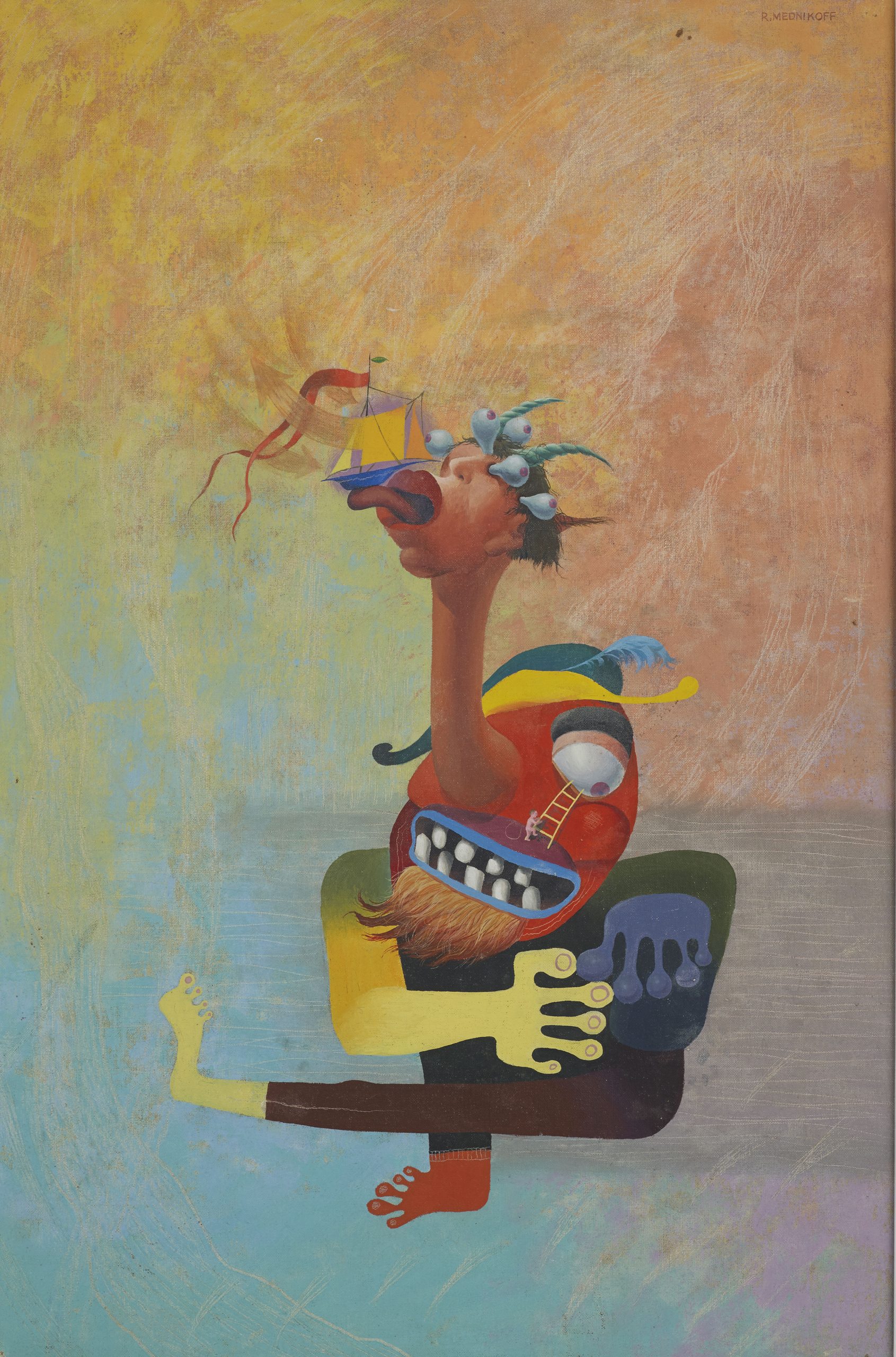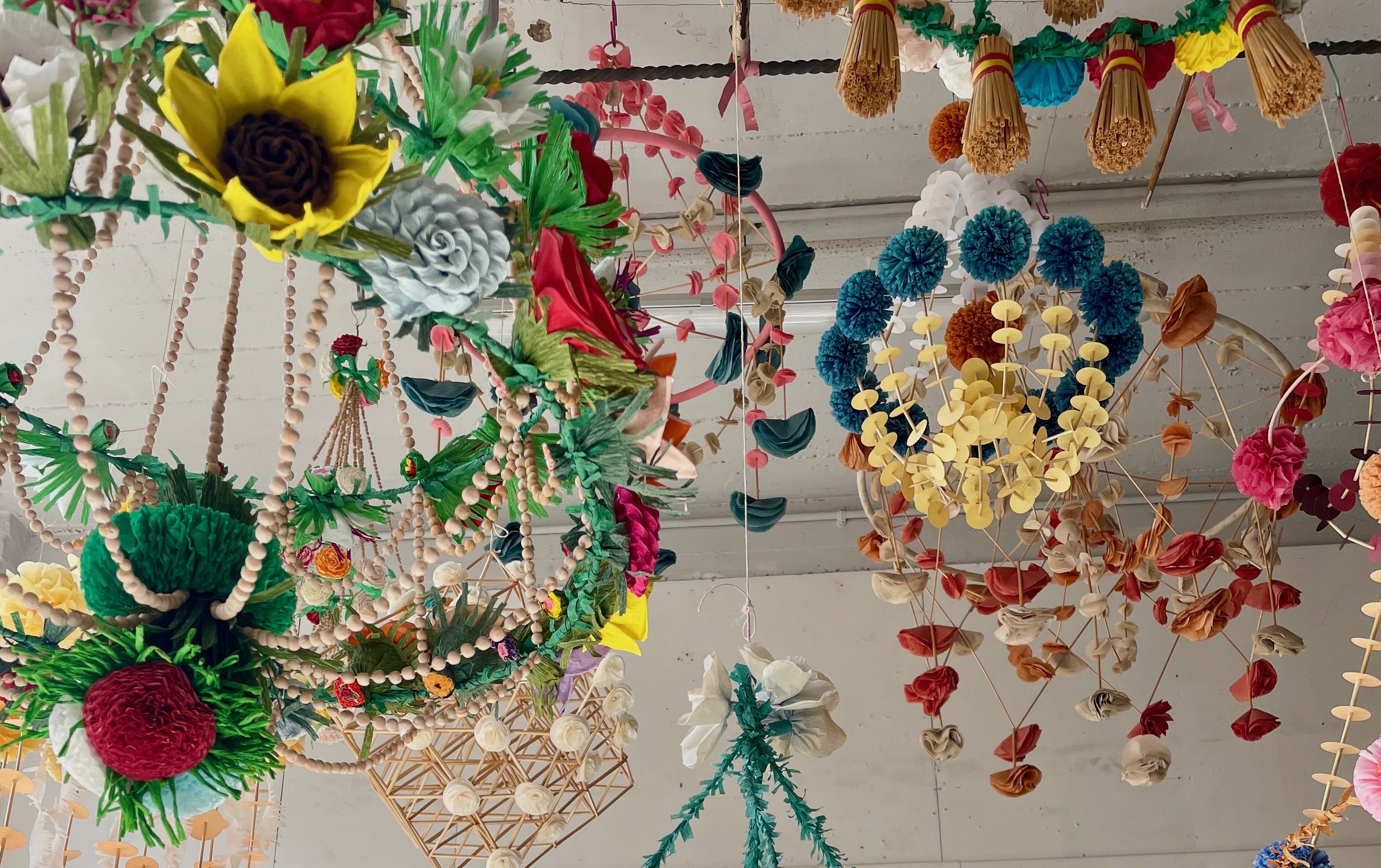My Favourite Painting: James Birch
'The symbolism in it is too weird to mention and every time I look at it I see more.'


James Birch chooses Mednikoff’s painting
‘The reason why I like it is I’ve had it hanging above my bed for 20 years and, even though it was painted in 1941, the hands and the feet look like a 1960s prog-rock album cover.'
'The symbolism in it is too weird to mention and every time I look at it I see more. Mednikoff’s partner Grace Pailthorpe invented the term ‘juvenile delinquency’ and every time I look at the picture, I enjoy that association’
James Birch is an art dealer. He is the curator of ‘Them’, an exhibition featuring fashionable 1970s artistic high society at the Redfern Gallery, London W1, until February 15.
John McEwen comments on Mednikoff’s painting
Sex, politics and religion absorbed the Surrealists, especially sex, as they were most influenced by Freudian psychoanalysis. The term Surreal – ‘transcending the real’ – was coined in 1917 by Apollinaire. In 1924, his fellow French poet André Breton wrote the Surrealist Manifesto, advocating artistic expressions of ‘pure psychic automatism’ to free the mind of damaging repression.
In 1936, pictures by artist Reuben Mednikoff and his companion and collaborator Grace Pailthorpe (1883–1971), a First World War surgeon in military hospitals, were singled out by Breton as the pick of the British contribution to London’s first Surrealist exhibition. Who can wonder, when one considers this oil-on-board painting by Mednikoff? It dates from 1941, by which war-time date the couple had emigrated to the US.
In 1935, when the pair first met, Pailthorpe was studying the psychology of female prisoners and wanted someone to help her ‘prise open’ the mind of a patient. Mednikoff’s similar exploration of the subconscious as a painter and ‘sensitive, sympathetic nature’ made him the ideal person to do this. He taught her to paint and the two of them were soon producing separately – and sometimes together – pictures they called ‘psychorealist’.
This ‘automatically’ conceived figure is a prime example. The scholar Dr Hope Wolf suggests the yacht may refer to their emigration and the beard to Mednikoff’s memories of Jewish religious figures. Art comes from art, so one might also see the effect of the Surrealists Dalí and Miró, even of Goya and of the medieval Hieronymus Bosch. It could easily be a digital image made today, too, which reveals how deeply Surrealism’s transcendence has influenced advertising, film-making and modern thinking. ‘It’s surreal!’ remains an appropriately automatic reaction.
Sign up for the Country Life Newsletter
Exquisite houses, the beauty of Nature, and how to get the most from your life, straight to your inbox.
The painting is included in the forthcoming exhibition ‘British Surrealism’, at the Dulwich Picture Gallery, London SE21, from February 26 to May 17. Visit www.dulwichpicturegallery.org.uk to find out more.
Country Life is unlike any other magazine: the only glossy weekly on the newsstand and the only magazine that has been guest-edited by HRH The King not once, but twice. It is a celebration of modern rural life and all its diverse joys and pleasures — that was first published in Queen Victoria's Diamond Jubilee year. Our eclectic mixture of witty and informative content — from the most up-to-date property news and commentary and a coveted glimpse inside some of the UK's best houses and gardens, to gardening, the arts and interior design, written by experts in their field — still cannot be found in print or online, anywhere else.
-
 Burberry, Jess Wheeler and The Courtauld: Everything you need to know about London Craft Week 2025
Burberry, Jess Wheeler and The Courtauld: Everything you need to know about London Craft Week 2025With more than 400 exhibits and events dotted around the capital, and everything from dollshouse's to tutu making, there is something for everyone at the festival, which runs from May 12-18.
By Lotte Brundle
-
 Everything you need to know about private jet travel and 10 rules to fly by
Everything you need to know about private jet travel and 10 rules to fly byDespite the monetary and environmental cost, the UK can now claim to be the private jet capital of Europe.
By Simon Mills
-
 'As a child I wanted to snuggle up with the dogs and be part of it': Alexia Robinson chooses her favourite painting
'As a child I wanted to snuggle up with the dogs and be part of it': Alexia Robinson chooses her favourite paintingAlexia Robinson, founder of Love British Food, chooses an Edwin Landseer classic.
By Charlotte Mullins
-
 The Pre-Raphaelite painter who swapped 'willowy, nubile women' for stained glass — and created some of the best examples in Britain
The Pre-Raphaelite painter who swapped 'willowy, nubile women' for stained glass — and created some of the best examples in BritainThe painter Edward Burne-Jones turned from paint to glass for much of his career. James Hughes, director of the Victorian Society, chooses a glass masterpiece by Burne-Jones as his favourite 'painting'.
By Charlotte Mullins
-
 'I can’t look away. I’m captivated': The painter who takes years over each portrait, with the only guarantee being that it won't look like the subject
'I can’t look away. I’m captivated': The painter who takes years over each portrait, with the only guarantee being that it won't look like the subjectFor Country Life's My Favourite Painting slot, the writer Emily Howes chooses a work by a daring and challenging artist: Frank Auerbach.
By Toby Keel
-
 My Favourite Painting: Rob Houchen
My Favourite Painting: Rob HouchenThe actor Rob Houchen chooses a bold and challenging Egon Schiele work.
By Charlotte Mullins
-
 My Favourite Painting: Jeremy Clarkson
My Favourite Painting: Jeremy Clarkson'That's why this is my favourite painting. Because it invites you to imagine'
By Charlotte Mullins
-
 The chair of the National Gallery names his favourite from among the 2,300 masterpieces — and it will come as a bit of a shock
The chair of the National Gallery names his favourite from among the 2,300 masterpieces — and it will come as a bit of a shockAs the National Gallery turns 200, the chair of its board of trustees, John Booth, chooses his favourite painting.
By Toby Keel
-
 'A wonderful reminder of what the countryside could and should be': The 200-year-old watercolour of a world fast disappearing
'A wonderful reminder of what the countryside could and should be': The 200-year-old watercolour of a world fast disappearingChristopher Price of the Rare Breed Survival Trust on the bucolic beauty of The Magic Apple Tree by Samuel Palmer, which he nominates as his favourite painting.
By Charlotte Mullins
-
 My favourite painting: Andrew Graham-Dixon
My favourite painting: Andrew Graham-Dixon'Lesson Number One: it’s the pictures that baffle and tantalise you that stay in the mind forever .'
By Country Life